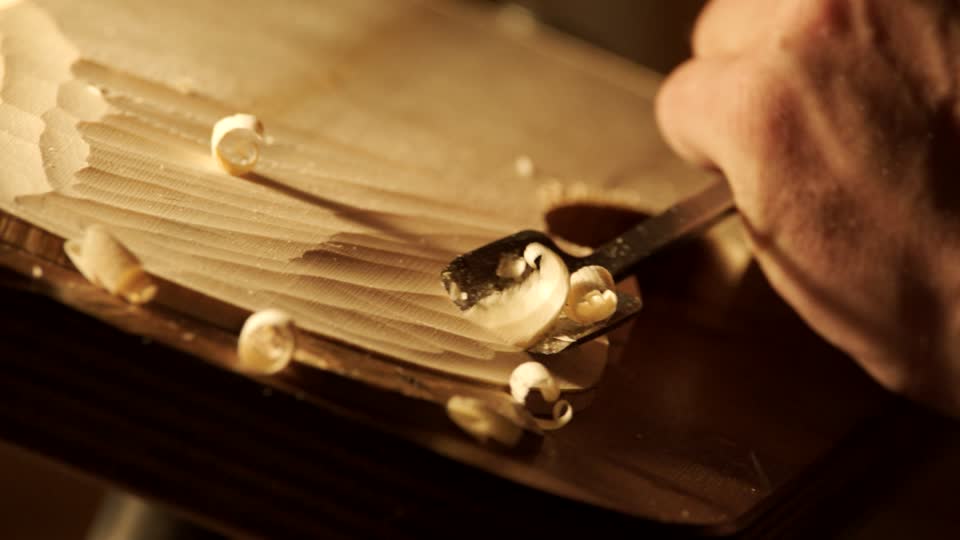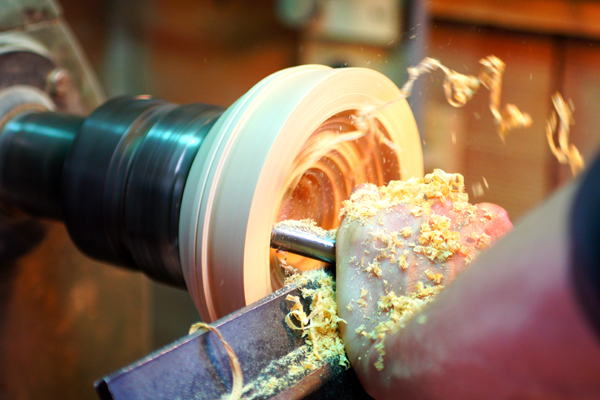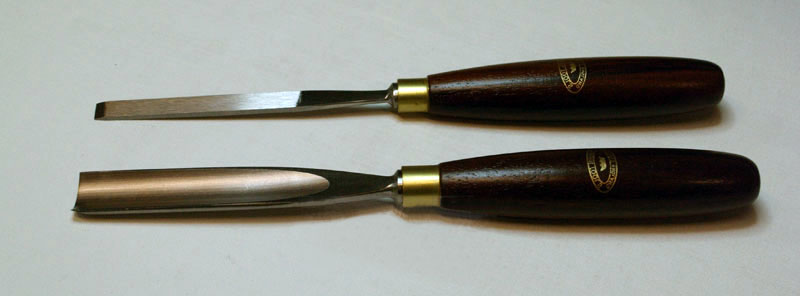
chisels
They are made of trapezoidal steel bars. The tip is sharpened with precise angles and must always be very sharp. During use you must be careful not to run into knots, and metal parts that could break them irreparably.
To use them correctly, place them on the wood at an angle of 30 ° and remove little material at a time. Never point the cutting edge towards the body during use, to avoid accidents.
The blade of the scapelli must have a precise inclination according to the hardness of the wood (from 25% to 35 ° degrees).
To sharpen them correctly, use the stone resting them on a wooden wedge to maintain the correct inclination.
There are some differences between Western and Japanese wood chisels, you can find more information here: Japanese wood chisels.

Turning chisels
Compared to normal chisels, they have a longer grip that allows them to be gripped with two hands. If used in oblique they allow to create throats and very thin incisions.
Similar to chisels, however, are made from rectangular section bars. The tip has a sharp point and not a fingernail like chisels. These tools are mainly used on the lathe, resting them on the iron holder and holding them perpendicular to the workpiece.

Gouges
Also similar to chisels, they have bent or "V" blades and are mainly used for roughing. They exist in various sizes, they are also suitable for making cables or channels or for thinning walls.
Tools to be used with caution
Care must be taken when using these freehand tools as they may cause injury if they get out of hand. The use of these tools requires patience and calm, it is sufficient to maintain the correct position of use to remove the material gradually and accurately.